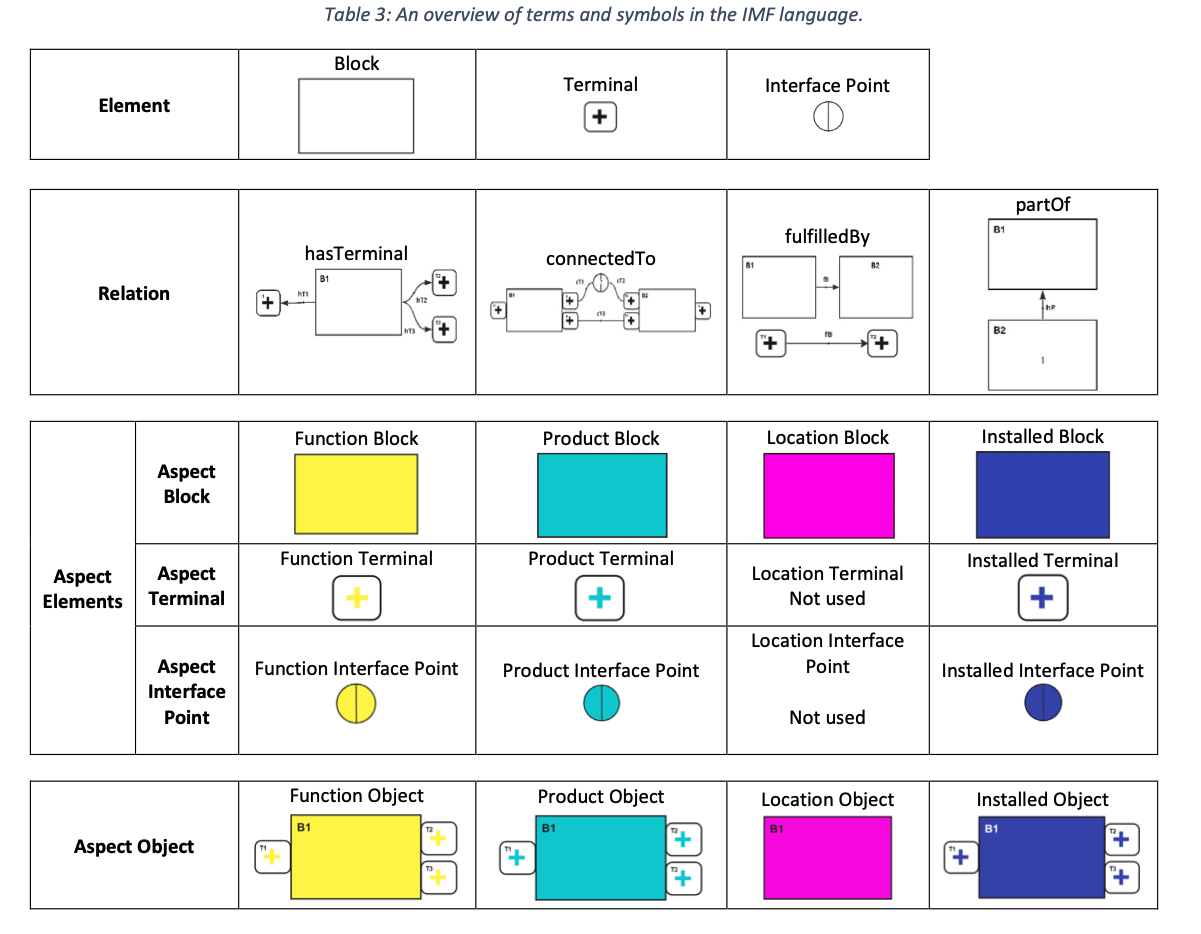This chapter defines the vocabulary and grammar rules of the IMF language in Section 4.2 and 4.3. Further, it introduces the Aspect Object in Section 4.4 that is central in the creation of IMF models, and shows the capabilities of the language through the creation of Breakdowns and Topologies in Section 4.5 and 4.6. Table 3 gives an overview of the different terms that is convenient to have when reading the chapter. Appendix C – Structural Specification gives details for how to implement the IMF language. The vocabulary and grammar of the IMF language is implemented using semantic web technologies, see Appendix D – Semantic Web Resources. A mapping of the IMF vocabulary into first-order logic suitable for developing a translation into ontologies such as ISO 15926-14 is found in Appendix E.







